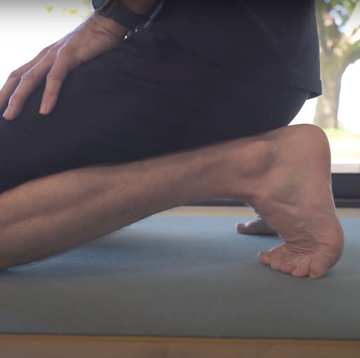Symptoms
Although any force from the outside may sprain the medial collateral, the usual cause in runners is a twisting of the knee while the foot is stuck in a pothole or if the foot has suddenly slipped on a greasy surface. This will cause acute pain on the inner side of the knee. In some runners a more chronic injury can occur if they have knock-knees, or those who always run on a camber. Continuing to run will not only prolong your pain but could cause secondary injuries through a change in your gait.
Signs
Although it may be sore to pressure, your doctor may not be able to demonstrate any local swelling. Depending on how severe the sprain is, there may be an effusion. However, runners who sprain their medial collaterals use their quadriceps muscles less as a result, and develop wasting, particularly of the inner quads. Your doctor will need to exclude cartilage and cruciate injuries, as they often occur in conjunction with collateral tears.
Medical investigation
As these are mainly directed to exclude other injuries they are only going to be appropriate if the sprain does not resolve. An X-ray with the knee stressed inwardly may demonstrate a complete tear, but arthroscopy or scans of the knee are necessary to eliminate further damage.
cruciate ligament injuries?
Shin splints how to treat and prevent them; meniscal cartilage tears and causes of hip pain and how to fix the problem A simple foam roller routine for runners Published: 05 June 2000 Any runner not using.
Self-treatment
Any runner not using RICE by now must have been living on another planet! In this case, ice is a mainstay not only of treatment but also of rehabilitation. If you cannot walk with the injury you may require crutches in the early stages, but try not to become too reliant upon them. A severe tear may be strapped initially to immobilise it.
Medical treatment
While it is important to heal the torn ligament, rehabilitation should also involve the restoration of power, strength and bulk to the quadriceps muscles which take the elastic strain when the knee is forced inward and hence protect the ligament from further injury. As full movement is restored, the physiotherapist will use quadriceps contractions and ultrasound with progressive cycling-type exercises. Proprioception, described as an awareness of where the body is in space, must be restored with specialist exercises before the injury can be considered fully cured.
Recovery time
Depending upon the severity of the injury and any associated problems, cure can take any time between a few days and several weeks. Minor injuries may heal if not raced through and some training might be possible while rehabilitation exercises are being diligently performed (one hopes!).












